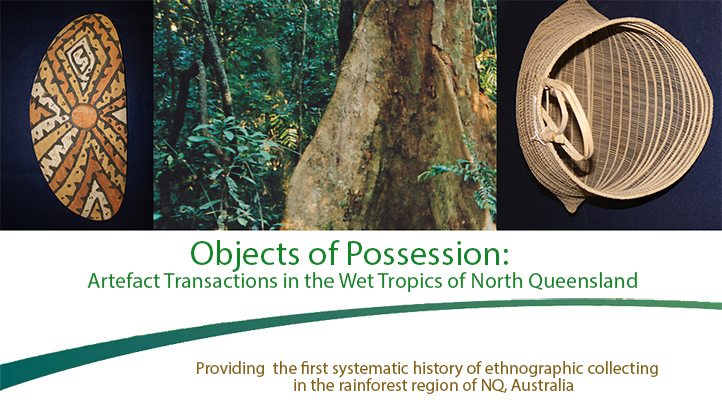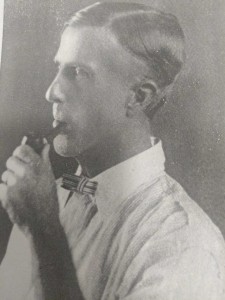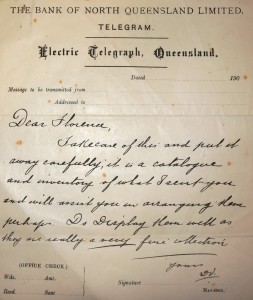Author: Rosita Henry
Collector: Derwent Vallance
Born: 30 January 1875 in London
Died: 1960 in Cairns, North Queensland
Active: Derwent Vallance made a ‘very fine collection’ of Aboriginal artefacts from the Wet Tropics region soon after he migrated from London to North Queensland, arriving in Cairns in January 1898. His collection is today held by the British Museum.
Background biography:
According to his grandson, Les Pearson (1987), Derwent Vallance (fig. 1) was the 7th child and youngest son of John Vallance and Florence Mary Vallance (nee Daniel). His father was a solicitor at Vallance and Vallance of 20 Essex Street, the Strand, London. Derwent began school at Kensington Grammar in 1883 and then attended New College, Eastbourne, from 1887 until 1892. After he graduated, he chose to take a gap year rather than attend Oxford and travelled to Germany (August 1892 -August 1893) to improve his German language skills and expand his knowledge of music and theatre.
Upon his return to England, he found work as a clerk with Alliance Insurance Company but in 1897 gave up this job to migrate to North Queensland. He left England on 1 December 1897, at the tender age of 21, travelling via the Torres Strait to Cairns on the British India passenger ship “The Duke of Argyle”.
In order to put him on his feet in North Queensland, Derwent’s father made prior arrangements from England by paying £500 for an apprenticeship for his son with a coffee grower at Hambledon (Edmonton), south of Cairns. However, upon his arrival, Derwent could not find any sign of the ‘coffee grower’. Thus cheated out of his apprenticeship, Derwent quickly had to find other work. He first signed on as a cook for a gang of sugarcane workers at Marshall’s retreat near Hambledon, where he worked for 6 months. He then found work at the Colonial Sugar Refining Company as a mill worker for the 1899 season, finishing in early December 1899. In 1900, he worked as a rent collector for the English and Scottish Bank. This job required him to travel to Chinese market gardens in the Redlynch, and Freshwater Creek areas (near Cairns).
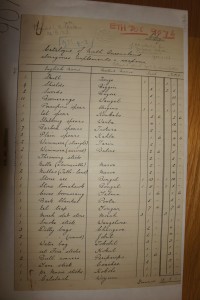
Figure 2: List of artefacts that Derwent Wallace sent to his sister, Florence Mary Walker in about 1903.
Vallance must have collected the artefacts that are in the British Museum during the first five years after his arrival in North Queensland. He sent 65 objects in about 1903 (fig. 2) to one of his older sisters, Florence Mary Walker (nee Vallance; b. 1866), asking her to “display them well as they are really a very fine collection” (fig. 3).
Florence kept the objects until 1933 when she donated them to the British Museum (fig. 4).
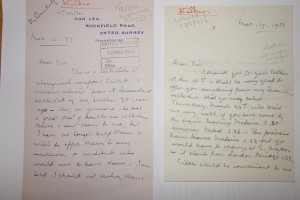
Figure 4: Letter by Derwent Vallance’s sister, Florence Mary Walker to the British Museum, 12 March 1933.
Among the collection, the most numerous types of object were boomerangs, shields and spears (11 boomerangs, 9 rainforest shields and 7 barbed spears).
Vallance may have bought these objects directly from Aboriginal people he met during the early years of his work in Hambledon, and later in his rent collecting days in the Redlynch, Freshwater and Kamerunga areas. Vallance appears to have travelled quite widely around the Cairns region and may have collected artefacts during his journeys. Photographs that he sent to his family in England during the early 1900s include places such as Aloomba, Barron River Gorge, Barron River (at Kamerunga) Hambledon Plantation, Herberton, Kuranda, Lilybank Plantation at Stratford, Lower Russell River, Mulgrave River (upstream form Gordonvale), Port Douglas, Redlynch, Stoney Creek, Trinity Beach and Yarrabah (Pearson 2004).
Alternatively, Vallance may have bought the objects from curio dealers. One item is marked in his catalogue (fig. 2) as being from Townsville.
Over the years, Vallance appears to have sent to his siblings in England additional objects that may still be in the hands of their descendants. For example, after the death of his father he wrote in a letter to his brothers and sisters (dated 23 Sep. 1918), “We are sending you some little shell and seed strings made by the blacks; they will make bonzer curtain chains and are somewhat uncommon. These will be posted about a month after this as we want to get a few more so that there will be some for all of you” (Pearson 1987:52).
After migrating to North Queensland, Vallance never returned to visit his family in England. After a series of short terms jobs, he eventually settled in Cairns, securing work in 1907 at Cairns Timber Ltd, first as an accountant and later as a director and Cairns Mill Manager. He married Edith Bridson in 1905 and they eventually had five children. The family lived in Cairns but spent their holidays at a cottage that Derwent bought at Second Beach (opposite Trinity Inlet), near Yarrabah.
Vallance retired from the timber company in 1945 and then moved to Trinity Beach, where he ran a grocery shop and post office and became a property developer. He died in Cairns in January 1960.
References:
Pearson, Les. 1987. Derwent Vallance (1875-1960): A Family History. Published and distributed by L.M. Pearson, Cairns. ISBN 09591981 3X [Cairns city Library RR 920 VAL]
Pearson, Les. 2004. Historical Photographs of Cairns & District: Derwent Vallance selected these photographs in about 1900 to show his family in England the local scene. L. M. Pearson, Brinsmead, Qld. [Cairns City Library RR 994.36 PEA]
